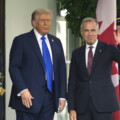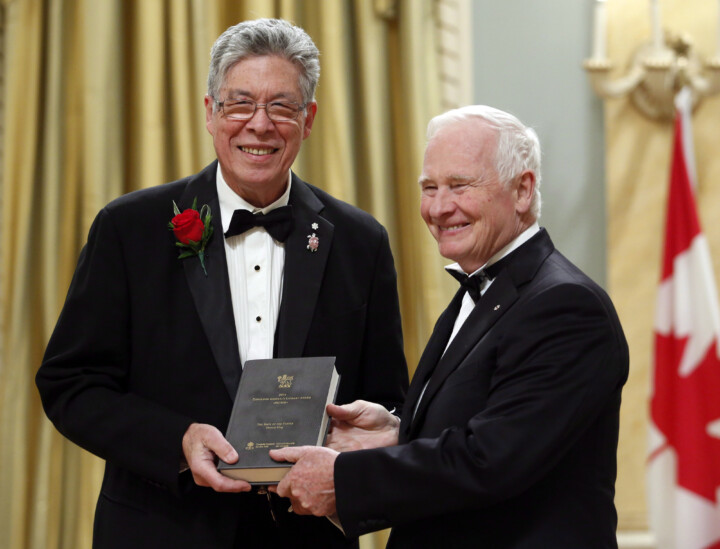
Canada has a major economic opportunity in the global low-carbon economy, if it gets its climate and energy policies right. Those policies should be informed by principles like leveraging the ingenuity of markets and free enterprise, limited government, and respect for provincial jurisdiction. The following article is the latest installment of The Hub’s series sponsored by Clean Prosperity exploring the why, what, and how of conservative climate policy.
Donald Trump’s presidential election poses big risks for the global push to decarbonize and for Canada’s low-carbon economic growth strategy. The incoming president has said that he intends to roll back many of the outgoing administration’s low-carbon investments and policies. There’s a risk that leaders in Canada and other countries could view his comments as a reason to reduce their low-carbon growth ambitions.
In fact, Trump’s rhetoric presents important but mostly short-term risks. In the long term, economic, geopolitical, and technological factors will continue to drive the advancement of a low-carbon global economy. Trump’s presidency may slow down that process, but it seems unlikely to stop it. While it is important to take what Trump has said on climate seriously, how closely his actual policies will mirror that negative message in practice is an open question. That decarbonization is now widely understood as a business imperative is a reason for optimism.
How therefore should Canada respond to Trump’s climate and energy policies?
The first priority should be protecting and growing our most important trading relationship. We need to show the U.S. that Canada continues to be an indispensable economic partner and a source of raw materials that are critical to running the U.S. economy and fulfilling Trump’s ambitions of reshoring industry. Canada’s oil and gas exports will continue to be a central part of that relationship.
Canada also however needs a long-term economic strategy that anticipates the inexorable rise of a global low-carbon economy. The good news is that our short- and long-term strategies can work together. Under a Trump presidency, there are good reasons for Canadian policy to continue promoting low-carbon growth. Here are three big ones:
1. We still need carbon markets to grow our low-carbon economy
The Biden administration’s Inflation Reduction Act (IRA) committed hundreds of billions of dollars to support low-carbon investment and presented a major competitiveness challenge to Canada. Our carbon markets have helped Canada mount a response to the IRA, alongside targeted incentives like investment tax credits. We’re still going to need both under Trump.
Why? Because there’s every possibility that many of the IRA incentives could remain in place. A disproportionate share of IRA benefits have flowed to Republican districts, creating investment and jobs that Republican legislators ostensibly don’t want to lose. That’s why they’ve argued against repealing it.
These Republicans may find a receptive audience in the new president. Tax credits for carbon capture and storage expanded dramatically under the first Trump administration, and Trump himself is on record supporting credits for low-carbon hydrogen production.
Alberta is already a global leader in carbon capture and plans to do a lot more. The province’s industrial carbon market is a decisive factor in making the province a competitive destination for investment, against the generous incentives on offer in the United States. Low-carbon projects depend on the revenue they can generate by selling carbon credits to industrial emitters, who use them to cover their carbon pricing obligations. Alberta will continue to need a strong carbon market in order to grow its emerging low-carbon economy.
2. If the U.S. adopts border carbon charges, Canada needs to be prepared
Coming changes to U.S. trade policy offer another basis for strengthening Canada’s commitment to policies that support low-carbon investment. President Trump has promised to bring in sweeping tariffs on imported goods. Emissions intensity could be a useful basis on which to design some of these new tariff measures. Vice President-elect JD Vance has argued as much, justifying protectionist trade policies as the smartest way to reduce emissions, by displacing production from high-emitting countries back to the U.S.
A bill introduced last year by Senate Republicans, called the Foreign Pollution Fee Act, gives an idea of how the tariffs might work in practice. Republicans are proposing to apply charges based on the emissions intensity of foreign products relative to their U.S. equivalents—an effective strategy for targeting Chinese imports, among other objectives. Trade partners with low enough emissions intensities would be eligible for tariff exemptions.
This is an argument for Canada to continue decarbonizing its industries in order to maintain preferential access to our largest trading partner. Should the Trump administration pursue tariffs based on emissions intensity, we should also seek to cooperate on the establishment of a unified carbon tariff zone that encompasses both countries.
Even if Trump doesn’t do it, emissions intensity is likely to become a central consideration in global trade over the long term, so a future U.S. administration could end up adopting carbon charges at the border. Europe has already implemented such a policy.
If U.S. tariff walls go up, Canada needs to be on the inside. Nearly two-thirds of Canada’s total trade is with the U.S., and energy products make up a third of our exports. We need to avoid any potential emissions-intensity trade barriers. It’s another reason why decarbonizing our industrial sector makes sense now as well as in the future.
3. Trump will need critical minerals, as does our EV supply chain
In addition to carbon markets and carbon tariffs, specific low-carbon initiatives that Canada has invested in will continue to be relevant under the next Trump administration. As Trump pursues a policy of reshoring American industry, he’ll be looking to allies to supply essential raw materials. That will necessarily include critical minerals for a range of applications in high-tech manufacturing, many of which are currently produced in China. Canada can supply these materials to the U.S., while also growing our domestic supply chain for electric vehicle manufacturing. We need to advance critical mineral projects now.
The new Trump presidency presents challenges for Canada. We have to strengthen our trade relationship with the U.S. and show ourselves to be an indispensable partner because U.S. trade remains critical to Canada’s economic prosperity.
But strategies for fostering Canada’s low-carbon growth—like industrial carbon markets—will continue to make sense under Trump. They’ll also help us to continue growing our low-carbon economy for the long term.
Decarbonization is a decades-long project. Firms and investors understand this—they deploy capital with time horizons far beyond a four-year presidential cycle. Canada should think about the development of its low-carbon economy in the same way.
This article was made possible by Clean Prosperity and the generosity of readers like you. Make a one-time contribution today.










